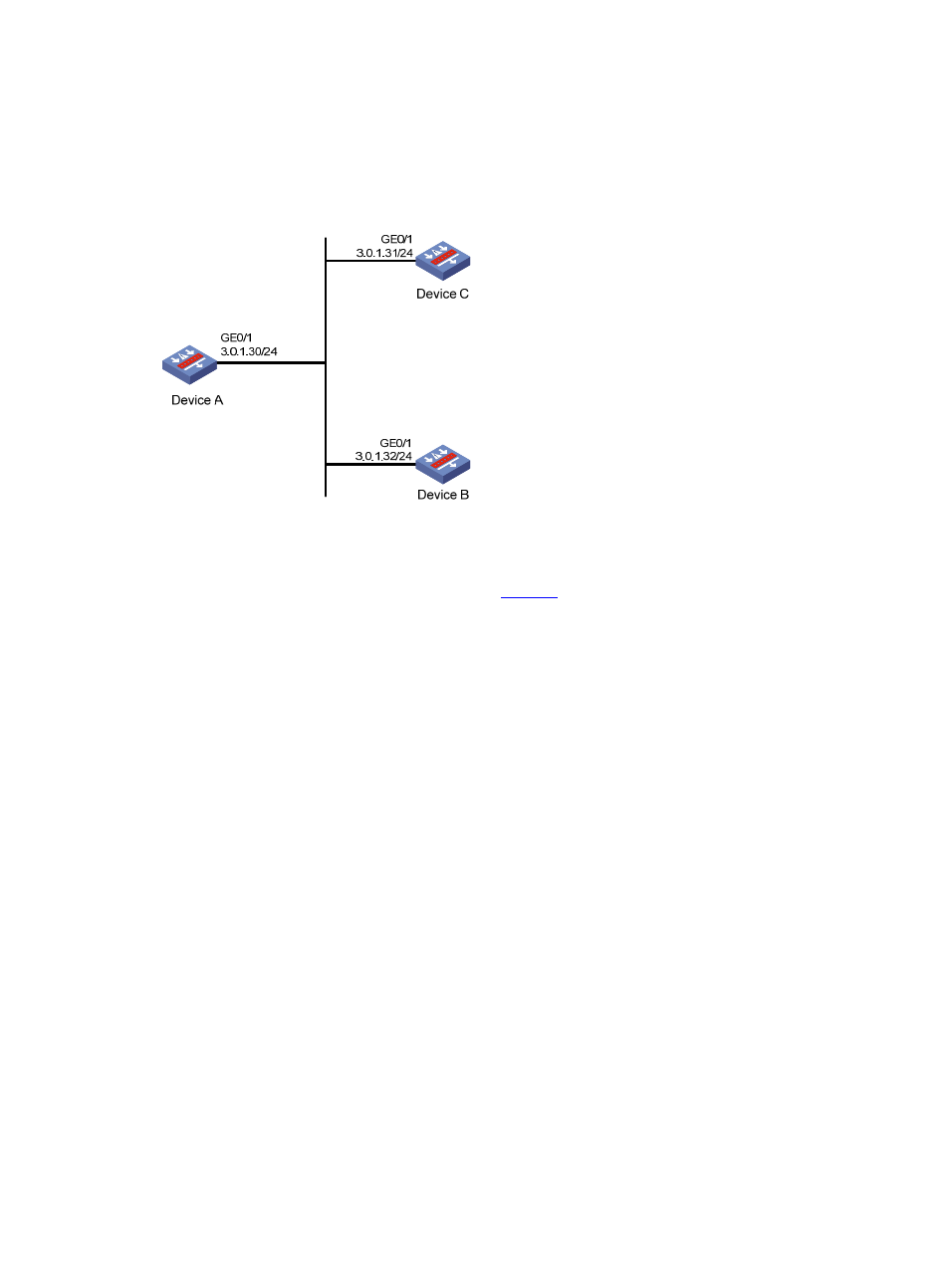Configuration procedure – H3C Technologies H3C SecPath F1000-E User Manual
Page 131

19
•
Device C works in broadcast server mode and sends out broadcast messages from GigabitEthernet
0/1.
•
Device B and Device A work in the broadcast client mode and receive broadcast messages through
their respective GigabitEthernet 0/1.
Figure 9 Network diagram for NTP broadcast mode configuration
Configuration procedure
Step1
Set the IP address for each interface as shown in
. The configuration procedure is omitted.
Step2
Configuration on Device C.
# Specify the local clock as the reference source, with the stratum level of 2.
[DeviceC] ntp-service refclock-master 2
# Configure Device C to work in broadcast server mode and send broadcast messages through
GigabitEthernet 0/1.
[DeviceC] interface gigabitEthernet0/1
[DeviceC-GigabitEthernet0/1] ntp-service broadcast-server
Step3
Configuration on Device A.
# Configure Device A to work in broadcast client mode and receive broadcast messages on
GigabitEthernet 0/1.
[DeviceA] interface gigabitEthernet0/1
[DeviceA-GigabitEthernet0/1] ntp-service broadcast-client
Step4
Configuration on Device B.
# Configure Device B to work in broadcast client mode and receive broadcast messages on
GigabitEthernet 0/1.
[DeviceB] interface gigabitEthernet0/1
[DeviceB-GigabitEthernet0/1] ntp-service broadcast-client
Device A and Device B get synchronized upon receiving a broadcast message from Device C.
# Take Device A as an example. View the NTP status of Device A after clock synchronization.
[DeviceA-GigabitEthernet0/1] display ntp-service status
